India stands at a pivotal moment in the global artificial intelligence (AI) landscape, as the Government of India releases its India AI Governance Guidelines, prepares to host the AI Impact Summit in February 2026, and leverages AI to realize the Viksit Bharat 2047 vision and the goal of “AI for all.”
The Government of India has taken a decisive step forward with the November 2025 release of the guidelines following public consultation. Issued by the Ministry of Electronics and Information Technology (MeitY) and the Office of the Principal Scientific Adviser, the guidelines aim to foster a safe, inclusive, and responsible adoption of AI in India with a clear objective of supporting innovation while mitigating risks.
BSA Welcomes India’s AI Governance Vision
The Business Software Alliance (BSA) welcomed the Government of India’s objective of “enabling safe and trusted AI innovation.” The seven principles in the guidelines closely mirror BSA’s longstanding vision for policy solutions in building responsible AI.
The document introduces a forward-looking approach built around three key elements:
- Six Policy Pillars: Infrastructure, Capacity Building, Policy & Regulation, Risk Mitigation, Accountability, and Institutions.
- Institutional Framework: Establishes three key bodies—a cross-government AI Governance Group (AIGG) for coordination, a Technology & Policy Expert Committee (TPEC) for technical guidance, and an AI Safety Institute (AISI) for validation and standards.
- Action Plan: Lays out short-, medium-, and long-term measures to operationalize the principles. These include voluntary codes of practice, risk-based classifications, sectoral standardization, and targeted legal amendments.
Taken together, these Guidelines are poised to anchor broader initiatives such as the India AI Mission and the AI Impact Summit in February 2026.
Alignment with BSA’s 2025 Recommendations
BSA’s submission to MeitY in February 2025 recommended several key directions now reflected in the Guidelines. BSA welcomes this alignment in the following areas:
- Whole-of-Government Coordination: The proposed AIGG and TPEC echo BSA’s call for harmonized policymaking across the government to reduce policy fragmentation.
- Leveraging Existing Legal Frameworks: Rather than create a new AI-specific law, the guidelines build on the IT Act, the Digital Personal Data Protection Act, and sectoral laws—a principle BSA has consistently supported.
- Role-Based Accountability: The guidelines propose proportional obligations based on the roles of AI developers and AI deployers, which echoes BSA’s broader recommendation to establish role-based responsibilities.
- Text and Data Mining (TDM) Exception: The Government proposes a balanced approach to enable TDM while protecting the legitimate interests of copyright holders and creators in line with BSA’s recommendations.
- Content Provenance Standards: The endorsement for global standards on content provenance is consistent with BSA’s recommendation.
- Voluntary, Risk-Based Governance: From transparency reports to self-certification, the Guidelines adopt a balanced approach that allows room for innovation.
Areas Needing Further Clarity or Consultation
While the guidelines are broadly aligned with BSA’s vision, several areas would benefit from additional refinement and stakeholder engagement:
- Industry Representation: The lack of formal industry roles in AIGG and TPEC could limit practical insights and implementation efficiency.
- AI Incident Reporting: The report calls for establishing an “AI incident reporting mechanism” but with little detail. Even voluntary incident reporting mechanisms require significant consultation, particularly in the AI context, which may heighten key implementation challenges, such as causation, role of different actors, and duplicative overlap with other reporting regimes.
- Accountability Mechanisms: Terms like “peer monitoring” and “graded liability” lack operational clarity. Further consultation could help define these frameworks in a workable, industry-aligned manner.
Looking Ahead: Enterprise AI and the AI Impact Summit
BSA recently launched its “Enterprise AI Adoption Agenda for India,” making concrete policy recommendations aligned with the India AI Impact Summit 2026’s foundational pillars of human capital, democratizing AI resources, economic growth, and social good. These adoption pillars may contribute an additional $500–600 billion to India’s GDP by 2035 as per NITI Aayog’s AI for Viksit Bharat report, driven by productivity improvements and operational efficiencies, refocusing labor on higher-value tasks.
The guidelines mark a major step forward in shaping responsible AI deployment. For enterprise software firms, the guidelines provide a welcome signal that India is looking more carefully at collaboration, interoperability, and innovation. This strategic vision will empower enterprises to responsibly scale AI, build public trust, and further India’s widespread AI adoption.

